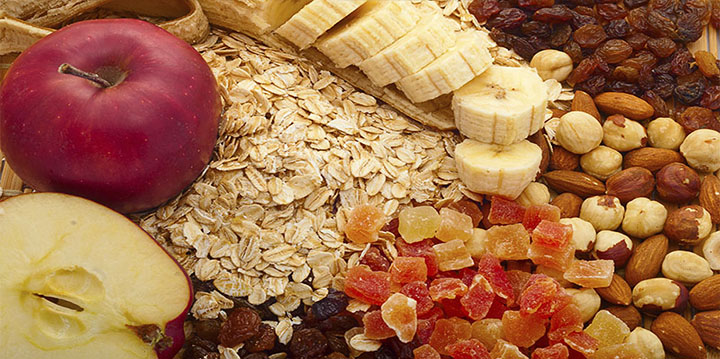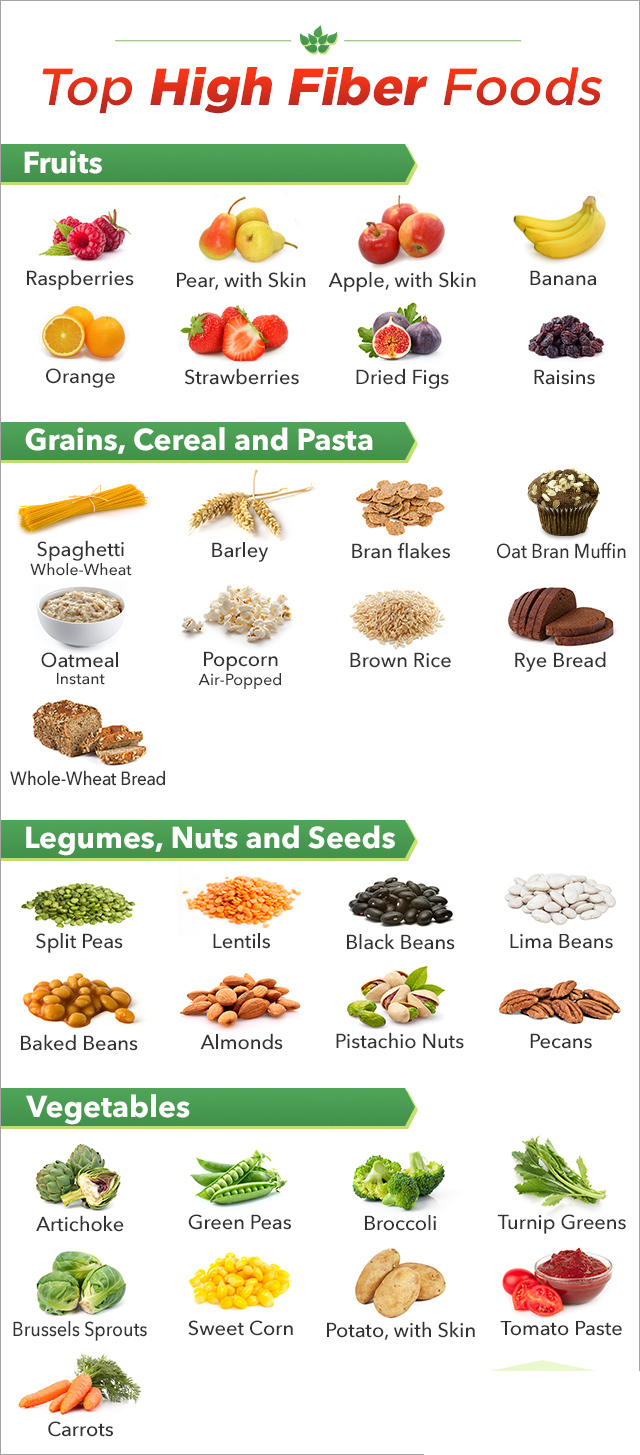Do you know which the top fibre-rich foods are?

After you read this article you will be able to distinguish them easier so that you can add them to your daily diet. Fibres are a valuable friend to the digestive system. They help it to function properly and what is more, they control cholesterol and blood sugar levels and even promote heart health.
What fibre quantity we need?
Women should aim at a daily intake of 21-25 grams and men should aim at a daily intake of 30-38 grams.
Soluble and insoluble fibres
It may sound strange to you but fibres are never completely absorbed by the body and hence they are so beneficial. There are two types of fibres – soluble and insoluble, but both pass through your digestive system relatively intact.
The difference is that in the stomach soluble fibres turn into a gel-like substance which helps digestion and thanks to it the body absorbs the biggest possible quantity of nutrients from the food before throwing out the waste. Insoluble fibres do not turn into a gel. They help soften the food waste thus facilitating its passage through the intestines.
What will happen if you take too much or (too little) fibres?
You risk getting constipation if your daily diet does not include sufficient fibre quantity. Fibres also help to keep blood sugar within healthy levels, so it is important that you take enough fibres to assist this natural body process. Fibres also affect the feeling of satiety. If you do not take sufficient quantity of fibres your risk your body failing to switch off the hunger signal on time. Or, put in other words, your risk keeping on eating even after you have taken sufficient quantity of food. Excessive fibre intake will also lead to food passing quicker than needed through your digestive system. Consequently, you will not absorb all the nutrients from the food you have taken. Plus, the bigger quantity of fibres may cause gas, bloating and cramps, especially at night.
How to add fibres to our diet unnoticeably
Nuts and seeds are excellent sources of dietary fibres and, putting allergies aside, most people eat them without having problems.
Flaxseed and chia seed are good sources of fibre. They can be added to you oatmeal bowl, as well as to shakes, yoghurt and even to baked foods. And you can rest assured that nobody will notice them. You can also sprinkle your salads with ground walnuts and almonds – it will be both a useful and tasty solution.
If you make shakes regularly, add a handful of spinach in the blender. Or carrots. In fact, both can be cut, grated and mashed and then added to your omelette or homemade pizza.
Top fibre-rich foods
Do you want to increase the fibre content of your daily diet?
Then you should do only one thing – to rediscover the plant realm. Plant products, unprocessed ones in particular, contain all soluble and insoluble fibres which Mother Nature has given us. Unfortunately, a big part of the food we eat has a high content of processed foods, sugar and meet, which contain almost no fibres.
The table below gives you a good idea of the foods which contain fibres and which you should add to your diet.













LEAVE A COMMENT :
Comments sort : Newest / Oldest / Most Upvoted